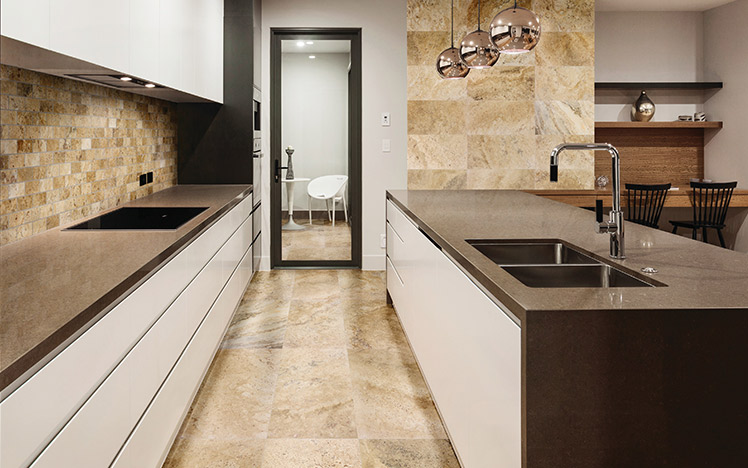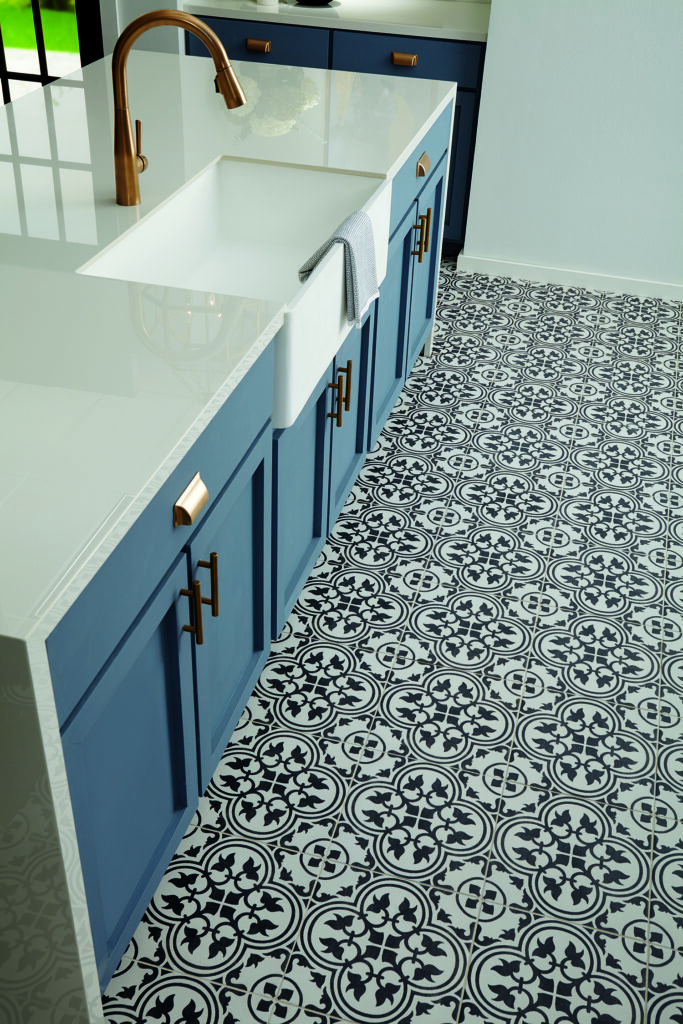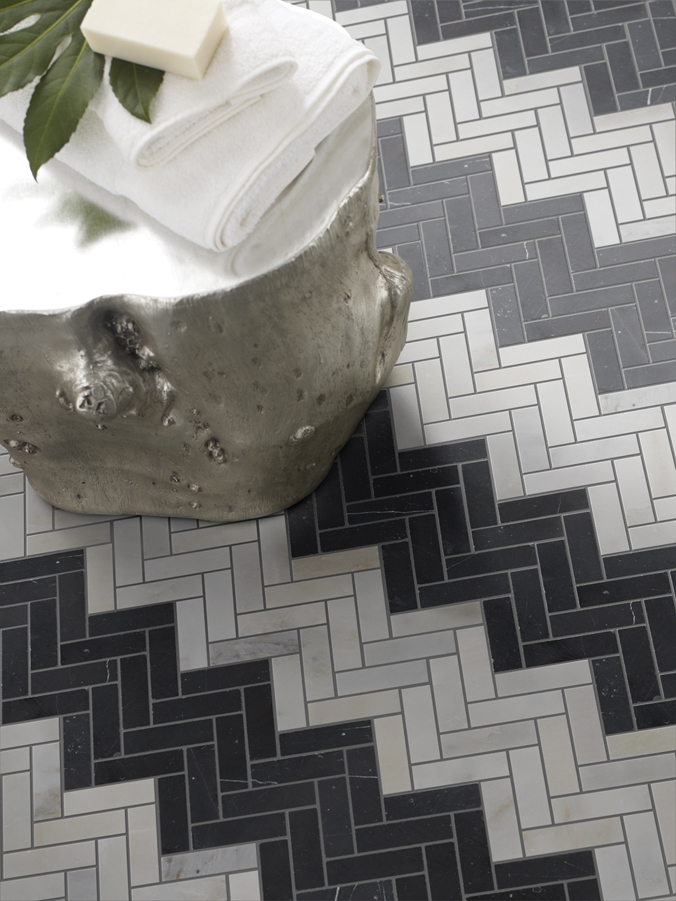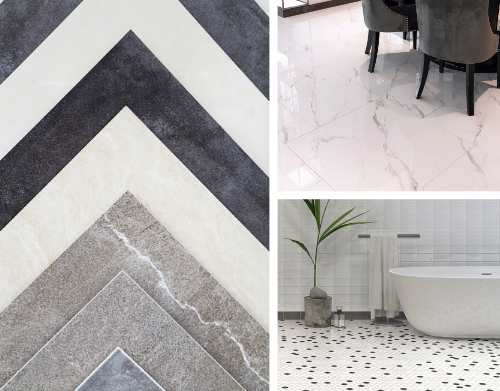Although there are many similarities among natural stone and ceramic tile, they are not the exact same and should be treated as such. Even though they are both hard surfaces made from natural materials, are installed the same and require the same level of care, each material has its own drawbacks and benefits. To help you make the right choice for your home and project we are comparing the pros and cons of natural stone vs. ceramic tile.
What is Natural Stone
Natural stone is pretty much exactly what it sounds like. It comes right from the earth and is not man made. You can find a variety of natural stones available such as slate, marble, limestone, travertine, and granite.

What is Ceramic Tile
Ceramic tile is typically made from white or red clay that was fired in a kiln. Most ceramic tiles are manufactured with a glaze, however, unglazed ceramic tiles are available. The glaze creates an impervious seal that makes the tile more tough, waterproof and stain resistant.
An unglazed tile is essentially ceramic in its natural state. As the tile is extremely porous, it will easily absorb liquids and stains. When an unglazed ceramic tile is used, it is recommended that the proper sealant is used which gives the tile a protective layer.
* It is important to note that porcelain and ceramic tile, while they are similar, they are not the same product. Check out our porcelain vs. ceramic tile blog for more information on which one is right for you.

Natural Stone vs. Ceramic Tile
Durability
Generally natural stone is more durable than ceramic tile. The wear and tear of natural stone is part of the characteristics that give stone its appeal.
The nice thing about ceramic tile is that they are available in different hardness ratings. The higher the rating, the greater the durability. A lower rating tile is great for a wall application for a backsplash, but will not be well suited for your floors where it will have to endure foot traffic.
Winner: Natural Stone

Cleaning & Maintenance
Basic regular cleaning and maintenance is required for any flooring product, especially to keep them looking new, however, the way to do it varies between natural stone and ceramic tile.
Natural stone is more porous than ceramic tile and similar to an unglazed ceramic tile, it will require a seal or glaze to protect the stone from water and stains. Depending on the stone material, the sealant may need to be applied periodically. For everyday maintenance, stay away from acidic cleaners as they can damage the stone.
Similar to natural stone and mentioned above, unglazed ceramic tile will also require a sealant or glaze in order to protect the tile from water and stains. This glaze however is durable enough for a wide variety of cleaning products.
Glazed ceramic tile is ready to use without a sealant however, for added protection from staining, a sealant is often recommended.
Winner: GLAZED Ceramic Tile
Colour Options & Variations
Stone is available in a wide variety of natural variations. Everything from crisp white marble to deep beige and brown tones.
Ceramic tile, being man-made, is available in a larger selection of colours and pattern variations. Ceramic tiles can be made to resemble natural stone, wood planks and so much more thanks to new technology. There is sure to be a ceramic tile that fits your interior design style and needs.
Winner: Ceramic Tile

Cost
Natural stone is one of the more expensive tile options, but the final luxe look makes the price tag all worthwhile. Ceramic is the exact opposite, as it is one of the more affordable tile options available. That being said, depending on the style, hardness rating and finish (glazed or unglazed), the price will vary.
Winner: Ceramic Tile
Head on down to a Nufloors near you to browse their selection of tile and natural stone flooring options and speak with a flooring expert today!




